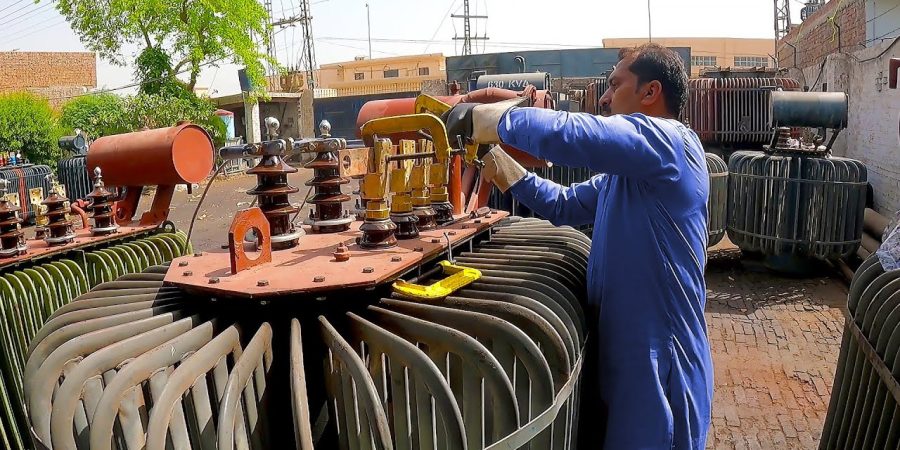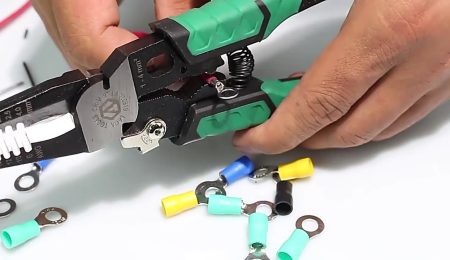Electric transformers are crucial components in the distribution and regulation of electrical power. The manufacturing process of a 2500 KVA electric transformer involves several meticulously controlled steps to ensure the final product meets stringent quality standards and operates efficiently. This article delves into each stage of the manufacturing process, from the initial design to the final testing.
1. Design and Specifications
The process begins with detailed engineering and design. Engineers consider various factors such as the transformer’s intended application, environmental conditions, cooling methods, and efficiency requirements. The key design parameters include:
- Voltage Ratings: Primary and secondary voltage ratings.
- Power Rating: 2500 KVA.
- Frequency: Typically 50 or 60 Hz.
- Cooling Method: Oil-cooled or air-cooled.
2. Core Construction
Material Selection
The core is made from high-quality, grain-oriented silicon steel laminations. This material is chosen for its low hysteresis loss and high permeability, which are critical for efficient transformer operation.
Lamination Cutting
The silicon steel sheets are cut into the required shapes and sizes using CNC machines or precision cutting tools. The laminations are then stacked together in a specific pattern to minimize energy losses.
Core Assembly
The stacked laminations are assembled into the core structure, typically in an E-I or C-type configuration. The core is then clamped and securely fastened to maintain its shape and integrity.
3. Winding Process
Conductor Selection
Copper or aluminum conductors are used for the windings. Copper is preferred due to its superior electrical conductivity and thermal properties.
Coil Winding
The primary and secondary windings are wound separately on specialized winding machines. The winding process must be precise to ensure uniform distribution of the magnetic field and to avoid hot spots.
Insulation
Each layer of the winding is insulated using high-quality insulating materials like paper, Nomex, or Mylar. This insulation prevents short circuits and ensures electrical isolation between the windings.
4. Assembly
Core and Coil Assembly
The wound coils are assembled onto the core. This involves careful alignment and securing of the coils to the core structure. Proper spacing is maintained to ensure efficient cooling and minimize electrical losses.
Insulation and Taping
Additional insulation is applied to the assembled core and coil structure. Taping is done to secure the windings and ensure they remain in place during operation.
Tank and Cooling System
The transformer is placed inside a tank made of high-quality steel. The tank is designed to hold the transformer oil, which acts as a coolant and insulator. Radiators or cooling fins are attached to the tank to enhance heat dissipation.
5. Vacuum Drying and Oil Filling
Vacuum Drying
The assembled transformer is placed in a vacuum chamber to remove moisture and air from the insulation materials. This step is crucial to prevent electrical breakdowns and ensure long-term reliability.
Oil Filling
After vacuum drying, the transformer tank is filled with high-quality transformer oil. The oil provides insulation and cooling for the transformer. The filling process is done under vacuum to ensure no air bubbles are trapped inside.
6. Testing and Quality Control
Electrical Testing
Comprehensive electrical tests are conducted to ensure the transformer meets all design specifications and safety standards. These tests include:
- Turns Ratio Test: Ensures the correct ratio between primary and secondary windings.
- Insulation Resistance Test: Measures the resistance of the insulation materials.
- Dielectric Strength Test: Tests the transformer’s ability to withstand high voltage without breaking down.
- Load Test: Checks the performance of the transformer under load conditions.
Thermal Testing
Thermal tests are conducted to ensure the cooling system works efficiently and the transformer can operate safely at its rated capacity without overheating.
Noise Level Test
Transformers are tested for noise levels to ensure they operate quietly, especially in residential or noise-sensitive environments.
7. Painting and Finishing
The transformer tank and external components are painted with high-quality, weather-resistant paint to protect against corrosion and environmental damage. Labels and nameplates are attached, indicating the transformer’s specifications and serial number.
8. Final Inspection and Dispatch
A final inspection is conducted to ensure all components are correctly assembled and all tests have been passed. The transformer is then packed securely and prepared for dispatch to the customer.
The manufacturing process of a 2500 KVA electric transformer is a complex and highly technical process that requires precision, expertise, and stringent quality control. Each step, from design to final testing, is crucial to ensure the transformer operates efficiently and reliably in its intended application. By adhering to these detailed manufacturing processes, manufacturers can produce high-quality transformers that meet the demanding needs of modern electrical systems.
Supplier or Manufacturer from India? Register FREE and List Your products





Leave feedback about this